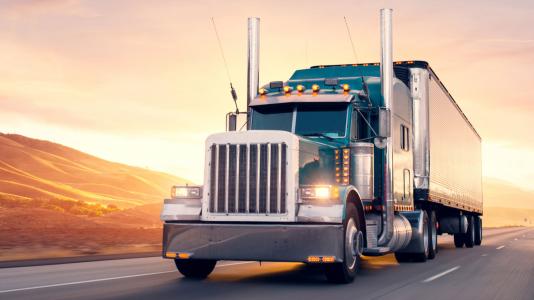Argonne investigates potential for e-fuels in heavy duty transportation

For decades, heavy duty transportation has relied on oil and gas. The high energy density of these fuel sources makes them ideal for mobilizing large-scale machines like jet planes, locomotives, marine vessels, and 18-wheelers, but not without a cost. Burning oil or natural gas from fossil sources brings carbon from the ground and releases it into the atmosphere in the form of CO2, contributing to greenhouse gas effects.
The need for cleaner solutions is mounting as the world seeks to make transportation of people and goods more sustainable. But are more neutral carbon fuel sources to run these heavy machines even possible? The answer today is still unknown, but researchers around the world, including those at the U.S. Department of Energy’s (DOE) Argonne National Laboratory, are exploring the potential.
E-fuels are the focus of a growing body of research. E-fuels or electro-fuels, is a general term describing fuels made by converting electricity generated from low- or zero-carbon sources, such as solar or wind, or nuclear power into liquid hydrocarbon fuel using existing sources of CO2, such as those from ethanol and electric power plants. E-fuels have the potential to meet low-carbon fuel demands for heavy duty transportation applications and serve national interests and goals for clean and domestic sources of energy.
Sustainability and Application Benefits
In heavy duty transportation in particular, using e-fuels is more advantageous than direct use of low-carbon electricity like nuclear or renewables. Powering ocean going marine vessels or jet planes directly with electricity would require a battery or a hydrogen storage plus a fuel cell, which are limited in the amount of energy they can carry within available volume and weight constraints. Direct electric use also would demand significant changes to existing powertrains and the infrastructure supporting the electric powertrains, adding to their cost. E-fuels, on the other hand, are “drop-in” fuels — that is, they have the potential to work with existing infrastructure and existing engines.
“For applications that have large energy requirements and are mobile, liquid fuels just give you an energy density that can’t be matched by battery energy storage,” said Doug Longman, the manager of engine research at Argonne. “We’re using liquid fuels because they have high energy density and you can get enough of it on board these large applications, like rail and marine, to achieve the range that they’re accustomed to.”
Argonne researchers address challenges through R&D
Researchers still must overcome multiple challenges before e-fuels can be advanced and commercialized. This includes developing the actual technologies to convert electricity to a hydrocarbon fuel sources on sufficiently large scales and finding ways of doing so that are cost-effective.
“There are many pathways for converting electricity to liquid hydrocarbon fuels, and depending on the technology pathway the costs will vary,” Argonne senior scientist Amgad Elgowainy said. “The big challenge is to develop the technology and to bring the costs down so that it can be competitive with current sources of liquid hydrocarbon fuels.”
Argonne researchers are advancing R&D in two major ways. First, they’re analyzing the e-fuel production process and its impact on the environment and cost. They model the entire process from when electricity is generated to when a gallon or a barrel of e-fuel is produced.
“We do modeling to look at how low carbon the e-fuel can be, what the costs will be and what the different costs drivers are to inform DOE and industry stakeholders on whether e-fuels can satisfy their cost and environmental targets, and to guide their R&D and product decisions,” Elgowainy said.
Argonne also advances the study of e-fuels by investigating how these fuels are used in engines. How engines operate and emissions are produced is heavily influenced by types of molecules within fuels.
“If e-fuels are in the category of drop-in fuels, consumption of them would be straightforward, but some of these more novel fuels or processes might have a slightly different composition of hydrocarbons, and that’s where we’d get involved to assess combustion performance,” said Longman.
Longman and fellow researchers take part in determining whether the unique features of the fuel affect engine efficiency, and in turn the carbon intensity of the e-fuels. His team also investigates whether components within the fuel might affect criteria air pollutant emissions such as nitrogen oxides and particulate matter. And, through DOE programs like Co-Optimization of Fuels & Engines, the team investigates whether the unique properties of e-fuels can be used to enable advanced engine combustion approaches that have been developed over the last decade.
“By helping our stakeholders understand the potential of these fuel technologies, the key costs and performance drivers, we empower them to make informed decisions that will shape the future,” Elgowainy said.